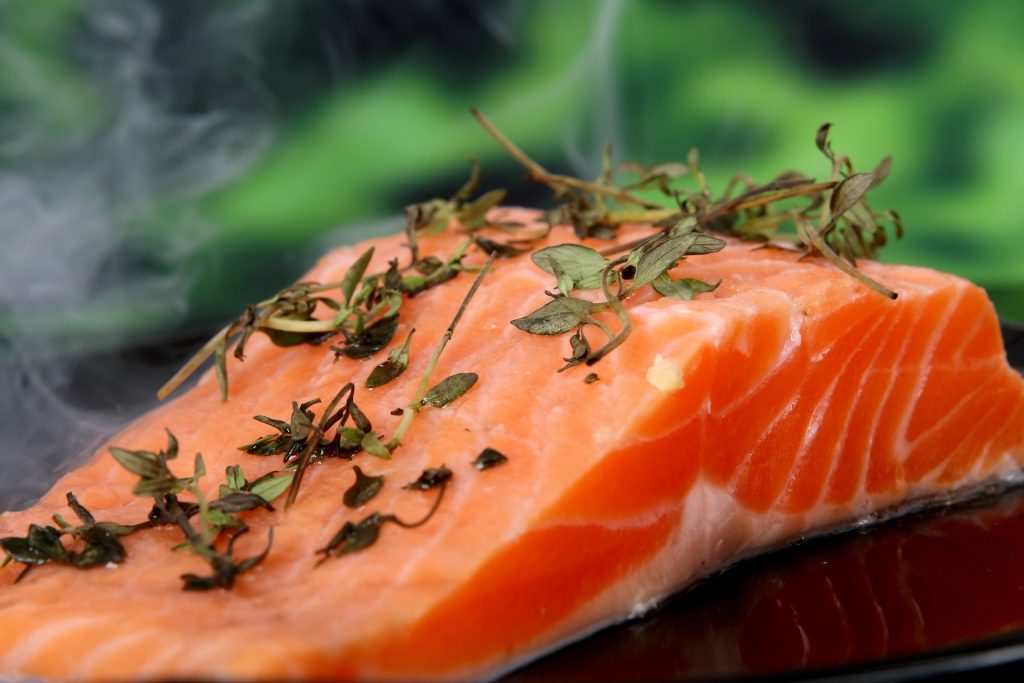 Docosahexaenoic acid (DHA, C22:6 (n-3)) is a metabolite of the essential fatty acids alpha linolenic acid (ALA, C18:3 (n-3)), and can be synthesised in mammals, including humans. Most human are able to synthesise small amounts of DHA from dietary ALA, but this rate varies due to genetic variation in expression of the synthetic enzymes, particularly delta 6-desaturase. For this reason, dietary ALA may not be a good source of DHA for some individuals, and therefore pre-formed DHA, from marine oils such as fish and algal oils, may hold advantages. Maintaining adequate levels of DHA is important because DHA has some specific biochemical effects that are not shared by other metabolites of ALA, including the formation of a number of hormone-like chemicals such as docosanoids, that may be required for correct nerve activity. Low levels of DHA may be associated with inflammation and supplementation of long chain marine oils containing DHA have been shown to have anti-inflammatory effects.
Docosahexaenoic acid (DHA, C22:6 (n-3)) is a metabolite of the essential fatty acids alpha linolenic acid (ALA, C18:3 (n-3)), and can be synthesised in mammals, including humans. Most human are able to synthesise small amounts of DHA from dietary ALA, but this rate varies due to genetic variation in expression of the synthetic enzymes, particularly delta 6-desaturase. For this reason, dietary ALA may not be a good source of DHA for some individuals, and therefore pre-formed DHA, from marine oils such as fish and algal oils, may hold advantages. Maintaining adequate levels of DHA is important because DHA has some specific biochemical effects that are not shared by other metabolites of ALA, including the formation of a number of hormone-like chemicals such as docosanoids, that may be required for correct nerve activity. Low levels of DHA may be associated with inflammation and supplementation of long chain marine oils containing DHA have been shown to have anti-inflammatory effects.

Rather than the absolute intake of omega-3 fatty acids, evidence suggests that it is the relative intake in relation to omega-6 fatty acids in the diet that is important. The omega-3 and omega-6 fatty acid intake ratio is thought to be required to be close to a ratio of 1 gram of omega-3 fat for every 3 grams of omega-6 fat, in order to maintain health. Evidence from rats studies show that increasing the omega-3 fatty acid alpha linolenic acid from 3 to 10 % of total fatty acids does not increase synthesis rates of the alpha linolenic acid metabolite docosahexaenoic acid. This suggests that at 3 % the alpha linolenic acid intake is high enough to provide adequate flux down the relevant pathway (at least in rats). Increasing alpha linolenic acid above a threshold amount therefore may not provide additional benefits over smaller increases, but does run the risk of creating detrimental effects by upsetting the omega-3 to omega-6 fatty acid ratio required for good health.
Studies have been performed to investigate the amount of ALA that must be consumed to synthesise DHA, and from these studies it has been shown that large variations exists in the ability of humans to effectively utilise dietary ALA for DHA synthesis. Rat experiments have also been performed in order to elucidate understanding of flux through the ALA pathway. In this regard, one study investigated the effects of a high, adequate or deficient ALA diets on DHA synthesis rates. Interestingly, rats fed an adequate ALA diet had a 2 fold higher synthesis rate of DHA compared to rats fed a deficient ALA diet, and a similar synthesis rate to rats fed the high ALA diet. Increasing ALA from 3 to 10 % of total fatty acids did not increase DHA synthesis rats in rats. If this is also the case in humans is not known. However, studies on humans show that it is the balance between omega-3 and omega-6 fats and not the absolute amounts that are important, and this view is supported by data in this rat study.
Eat Well, Stay Healthy, Protect Yourself
RdB
